
- Search
-
Login
-
0
ComparisonAdd products to compare, then they will appear here and you can compare parameters.
-
0
0 €Nothing in the basket.
News
The new V-Ray 3.2 is fully compatible with 3ds Max 2016! V-Ray 3.2 introduces VR rendering capabilities and multiple V-Ray RT GPU enhancements, and also includes improved volume rendering, distributed rendering, and global illumination. V-Ray 3.2 for 3ds Max is a free update for all V-Ray 3.0 customers. Log in at chaosgroup.com to download. New features:
New VR cameras
With two new VR camera types, you can now render stereo cube maps and spherical stereo images. Output your V-Ray scenes to popular VR formats like Oculus Rift and Samsung Gear VR quickly and easily.
New V-Ray RT GPU Features
V-Ray 3.2 for 3ds Max includes a faster and more powerful V-Ray RT GPU. V-Ray RT GPU supports:
– QMC sampling using NVIDIA CUDA (resolves noise faster)
– Displacement
– Anisotropic highlights
– Composite map
– Output curves
– Texture baking
– UDIM support (MARI)
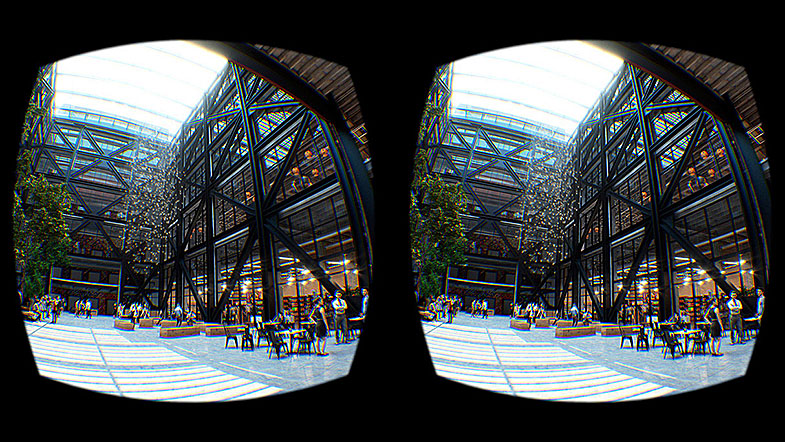 '
'
Volume rendering
New V-Ray Volume Grid adds support for OpenVDB, Field3D, and Phoenix FD volume grid formats. This allows you to import and render data from popular effects applications like Houdini and FumeFX.
Distributed rendering
Add or remove distributed rendering nodes on the fly
Global Illumination
Updated Light Cache algorithm removes light leaks and improves animation
Geometry
– New preview types for proxy objects – includes mesh simplification for optimized proxy display.
– Faster rendering of hair and fur.
– Intel Embree support for 3ds Max Hair & Fur and V-Ray Fur.
3ds Max 2016
– Full support for new Physical Camera – co-developed with 3ds Max team
– Support for new Physical Camera Exposure Control
– V-Ray Lens Analysis Utility adds support for the 3ds Max Physical Camera
Press Release
Blackmagic Design announced DeckLink 4K Extreme 12G - Quad SDI, a new mezzanine card that lets customers connect older Ultra HD and 4K equipment that use quad link 3G-SDI connections to their computer through their existing DeckLink 4K Extreme 12G video capture and playback card. The DeckLink 4K Extreme 12G - Quad SDI mezzanine card is available now for US$75 from Blackmagic Design re-sellers worldwide.
DeckLink 4K Extreme 12G has native 12G-SDI connections for working with the very latest high frame rate 4K equipment over a single, high speed SDI cable. Older, first generation monitors and projectors have quad link 3G-SDI connections that require 4 SDI cables. The new DeckLink 4K Extreme 12G - Quad SDI mezzanine card bridges the gap so customers can now have both high speed 12G-SDI connections and four 3G-SDI connections, all on the same card.
Now with DeckLink 4K Extreme 12G - Quad SDI a colorist working with DaVinci Resolve in a grading suite or theater can directly connect to older monitors and digital cinema projectors that have four 3G-SDI connections, without needing to buy additional external converters. In addition to Quad SDI support, the DeckLink 4K Extreme 12G - Quad SDI card also adds a built in hardware down converter for outputting 1080p60 video from 12G-SDI 2160p60 sources.
The new Quad Link SDI mezzanine card fits in the mezzanine slot on the DeckLink 4K Extreme 12G, replacing the standard HDMI card that normally occupies the slot. The mezzanine card is easily replaceable and can be installed directly by customers. Installing the Quad Link SDI mezzanine card gives customers quad link 3G-SDI capture and playback on their DeckLink 4K Extreme 12G card.
The DeckLink 4K Extreme 12G capture and playback card onto which the Quad SDI mezzanine card gets installed is an extremely fast, 8 lane PCI Express Generation 2 card that lets customers capture and playback dual stream video at resolutions up to 2160p60. This super fast, high performance card allows dual stream 3D, as well as the capture and playback of simultaneous fill and key, even when operating in Ultra HD at 60 frames per second.
Also released today is Desktop Video 10.4.1 software update. This update supports DeckLink 4K Extreme 12G - Quad SDI, and also adds 12-bit RGB 4:4:4 support for 2160p30, keying in 1080p60, and deep color support.
“DeckLink 4K Extreme 12G is our most advanced PCIe capture and playback card for high end digital cinema users,” said Grant Petty, CEO, Blackmagic Design. “Now customers that need to work with first generation Ultra HD have a future proof solution that works with both older equipment and the latest 12G-SDI gear! The new Desktop Video 10.4.1 adds even more capabilities to the card many people already have, giving them dramatically better color and more capabilities than ever before!”
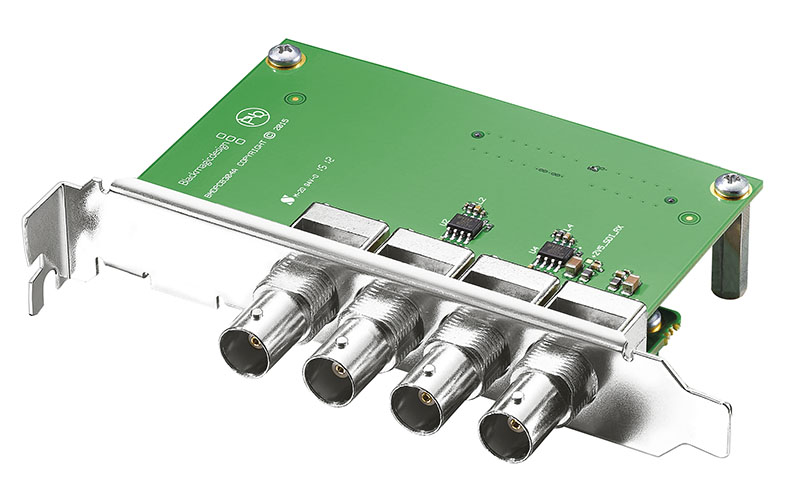
Availability and Price
DeckLink 4K Extreme 12G - Quad SDI is available now for US$75 from Blackmagic Design resellers worldwide. Desktop Video 10.4.1 software update can be downloaded free of charge from the Blackmagic design website.
Press Photography
Product photos of DeckLink 4K Extreme 12G - Quad SDI and all other Blackmagic Design products, are available at www.blackmagicdesign.com/press/images.|
About Blackmagic Design
Blackmagic Design creates the world’s highest quality video editing products, digital film cameras, color correctors, video converters, video monitoring, routers, live production switchers, disk recorders, waveform monitors and real time film scanners for the feature film, post production and television broadcast industries. Blackmagic Design’s DeckLink capture cards launched a revolution in quality and affordability in post production, while the company’s Emmy™ award winning DaVinci color correction products have dominated the television and film industry since 1984. Blackmagic Design continues ground breaking innovations including 6G-SDI and 12G-SDI products and stereoscopic 3D and Ultra HD workflows. Founded by world leading post production editors and engineers, Blackmagic Design has offices in the USA, UK, Japan, Singapore and Australia. For more information, please go to www.blackmagicdesign.com.
Speed Booster XL 0.64x from Caldwell Photographic Inc. and Metabones is a new Micro-4/3 mount Speed Booster adapter designed exclusively for the Panasonic GH4 and other selected Micro Four Thirds cameras, with a magnification of 0.64x. The Speed Booster XL 0.64x uses an advanced 6-element optical design to achieve extraordinary optical performance at apertures up to an incredible f/0.80, a new record for Micro Four Thirds format. The adapter is compatible with Blackmagic Cinema Camera MFT, Blackmagic Pocket Cinema Camera, Panasonic DMC-GH4, and some older models of MFT cameras, including Panasonic GH3 and Olympus E-PL7.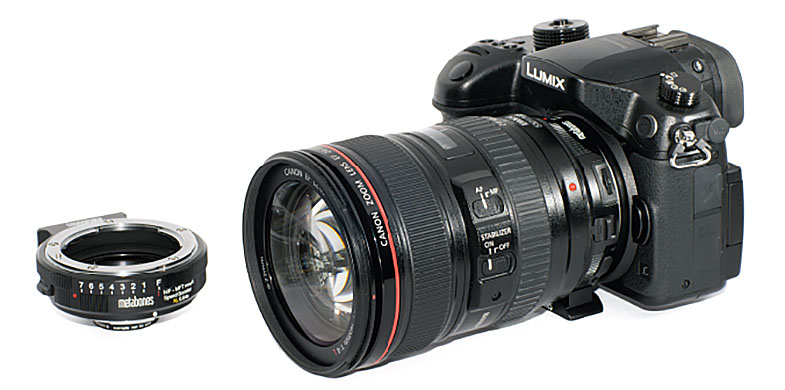
Press Release
Blackmagic Design announced that grading for Disney’s epic science fiction movie “Tomorrowland” was completed by Company 3's Stephen Nakamura using DaVinci Resolve. As “Tomorrowland” is the first title to be released in Dolby Vision, Nakamura also used DaVinci Resolve to create a pass for the new Dolby Vision projection system.
Directed by two-time Oscar® winner Brad Bird (“Ratatouille,” “The Incredibles”) and shot by Oscar-winning DP Claudio Miranda (“Life of Pi”), “Tomorrowland” follows Frank Walker (George Clooney), a former boy genius inventor, and Casey Newton (Britt Robertson), a bright teen bursting with scientific curiosity, as they embark on a danger filled mission to unearth the secrets of an enigmatic place somewhere in time and space that exists in their collective memory as Tomorrowland.
“‘Tomorrowland’ is somewhat brighter and more saturated than real life, but it's not an extreme look, as there are no crushed blacks or clipped highlights,” said Nakamura. “I built a lot of Power Windows in Resolve to very subtly help smooth out the effects. The movie is full of wild, elaborate visual effects, and there are always some enhancements that we can do in the grade when we see everything projected and in context with the other shots.”
According to Nakamura, there is an amazing VFX sequence when one of the characters first enters the world of Tomorrowland. He explained: “It’s a roughly two-minute-long moving shot with an enormous number of elements that Industrial Light & Magic (ILM) created. I was color grading at ILM while they were building the effects, and I used Resolve's soft clip and highlight tools within Color Match, along with some chroma keys, to increase and decrease saturation from particular portions of the frame.”
Nakamura also used DaVinci Resolve’s soft clip and highlight features during the Dolby Vision pass.
“When converting the files from the traditional d-cinema P3 format into the PQ format, you can make the brightest part of the frame more than twice as bright, and you can get really deep blacks. Brad and Claudio were interested in taking advantage of this high dynamic range, just in a subtle way,” said Nakamura. “A lot of the Dolby Vision grade was really about re-interpreting the material so it has a wider dynamic range without overpowering anything. For example, a bright part of the frame, like a lamp, wouldn't completely overpower the actors' faces as it potentially could.”
He concluded: “Even though the Dolby Vision pass gave me the potential to let highlights go brighter than anything you'd ever see in traditional d-cinema, I used DaVinci Resolve's soft clip and highlights features a lot to help retain the original feel of the standard 14 foot-lambert version in the Dolby Vision 31.5 foot-lambert version.”
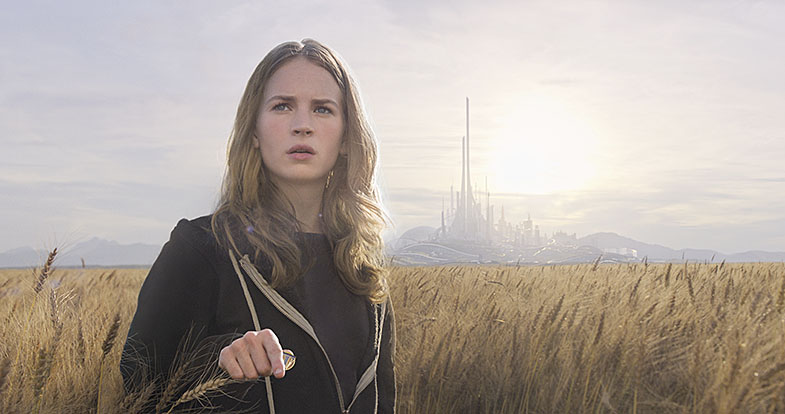
Press Photography
Product photos of DaVinci Resolve are available at www.blackmagicdesign.com/press/images.
About Blackmagic Design
Blackmagic Design creates the world’s highest quality video editing products, digital film cameras, color correctors, video converters, video monitoring, routers, live production switchers, disk recorders, waveform monitors and real time film scanners for the feature film, post production and television broadcast industries. Blackmagic Design’s DeckLink capture cards launched a revolution in quality and affordability in post production, while the company’s Emmy™ award winning DaVinci color correction products have dominated the television and film industry since 1984. Blackmagic Design continues ground breaking innovations including 6G-SDI and 12G-SDI products and stereoscopic 3D and Ultra HD workflows. Founded by world leading post production editors and engineers, Blackmagic Design has offices in the USA, UK, Japan, Singapore and Australia. For more information, please go to www.blackmagicdesign.com.
About Company 3
Company 3 is a group of post production facilities for features, commercials and music videos. Known for our creative color artistry, pioneering technology and global reach, Company 3 is trusted to deliver a quality product every time.
Company 3's incredible talent roster includes John Bonta, Sofie Borup, Sean Coleman, Paul Ensby, Siggy Ferstl, Bob Festa, Billy Gabor, Greg Fisher, Dave Hussey, Beau Leon, Tim Masick, Stephen Nakamura, Tom Poole, Tyler Roth, Rob Sciarratta, Stefan Sonnenfeld and Damien Van Der Cruyssen. www.company3.com. Twitter: @Company3
About Dolby Vision
Co-developed with Christie Digital, Dolby Vision uses state of the art optics and image processing to deliver high dynamic range (HDR) with enhanced color technology and contrast ratio for a richer, more detailed viewing experience in the cinema. Dolby Vision delivers HDR with enhanced color that has been praised by filmmakers for its amazing contrast, high brightness and color range that more closely matches what the human eye can see. With Dolby Vision, the blacks are truly black and the colors are vibrant.
Unique to the Dolby Vision projection system, beyond its brightness and vivid color reproduction, is its ability to deliver HDR with the contrast ratio that exceeds 1,000,000:1. The Dolby Vision projection system has been able to achieve a contrast making it a powerful tool to showcase bright elements of the movie, while maintaining the details in the shadows.
About Disney’s “Tomorrowland”
From Disney comes two-time Oscar® winner Brad Bird’s “Tomorrowland,” a riveting mystery adventure starring Academy Award® winner George Clooney. Bound by a shared destiny, former boy-genius Frank (Clooney), jaded by disillusionment, and Casey (Britt Robertson), a bright, optimistic teen bursting with scientific curiosity, embark on a danger-filled mission to unearth the secrets of an enigmatic place somewhere in time and space known only as “Tomorrowland.” What they must do there changes the world—and them—forever.
Featuring a screenplay by “Lost” writer and co-creator Damon Lindelof and Brad Bird, from a story by Lindelof & Bird & Jeff Jensen, “Tomorrowland” promises to take audiences on a thrill ride of nonstop adventures through new dimensions that have only been dreamed of.
The film also stars Hugh Laurie as brilliant scientist David Nix, Raffey Cassidy, Tim McGraw, Kathryn Hahn, Keegan-Michael Key and Thomas Robinson.
“Tomorrowland” is produced by Damon Lindelof, Brad Bird and Jeffrey Chernov and directed by Brad Bird, with John Walker, Bernard Bellew, Jeff Jensen and Brigham Taylor serving as executive producers. “Tomorrowland” opens in U.S. theaters on May 22, 2015.
Convergent Design constantly works to add more features and functionality to the Odyssey family of professional monitor/recorders. This release includes new features & functionality and adds more power, performance and versatility to the Odyssey7Q+, Odyssey7Q and Odyssey7. Convergent Design continues to update and expand the capabilities of the Odyssey7Q+, Odyssey7Q and Odyssey7 monitor/recorders to help extend the lifespan of their products.
New Features in the Release:
Expanded Odyssey LUT System, including custom 3D-LUTs
– Improved & Expanded set of Preset LUTs
– Support for user-loadable custom 3D-LUTs (up to 140, Odyssey7Q, Odyssey7Q+)
– 17x, 32x, 33x, 64x, 65x 3D-LUT (.CUBE format) Supported
– .CUBE Luts translated for Odyssey using CD 3D-LUT Converter App
– LUTs are currently for MONITORING only, not “baked in”
– LUTs viewed during recording noted in XML file metadata
– Extended and Legal Range LUTs Supported (EE vs LL)
LUT Routing to Tools & Outputs
– Image Analysis Tools can measure “LUTTED” image or original source
– Video outputs can independently turn ON/OFF LUT or Mirror OLED
Anamorphic Desqueeze
– 2.0x, 1.5x, 1.33x Support
– Corrected image sent to video outputs, recording unaffected
4K / 2K Monitoring Modes (Odyssey7Q, Odyssey7Q+)
– 17:9 Letterboxed within 16:9 image or Center-Cut to 16:9
– Letterbox or Center-Cut image sent to video outputs, full frame recorded
Monochrome Monitoring Mode
– View Luma only or individual Red, Green, or Blue channel in grey tone
Dual Zebras
– Set high & low for each, can overlap, separately selectable colors
Expanded False Color Mode
– Added Pink for Six colors
– Each color set high & low, can overlap
Expanded OLED Controls
– Advanced Monitor Calibration Control
– Color channel bias controls, SMPTE color bars reference
Improved Multi-Stream Mode Switching
– Switch between inputs without image flicker or glitch
Safe Eject at Power Down
– Automatically closes all file directories on shut down
Improved Sony FS RAW color reproduction
– Improved image quality in CinemaDNG and Apple ProRes recording
– FS700 Apple ProRes recording with S-Log2 or REC709(800%)
– FS7 CinemaDNG & Apple ProRes require SGamut3.Cine Color Space
Fixes & Improvements...
– FIXED Aud Out (Headphones) unmute
– FIXED Audio gain settings when switching Analog to SDI
– FIXED Safe Eject process to remove OLED flashing during procedure
– FIXED FS700 4K RAW -> HD Apple ProRes detection
– IMPROVED 4K Apple ProRes playback
– IMPROVED 4K pixel zoom 1:1 and 2:1
– IMPROVED PSF output support in all modes
– IMPROVED Reduced overall power usage
– IMPROVED Interlaced playback support
– IMPROVED 4K -> HD Apple ProRes playback
Software Updates...
– CD Apple ProRes Transfer Utility 1.7
– LUTs viewed during recording noted in XML file metadata
– Pomfort LiveGrade Support for Odyssey LUTs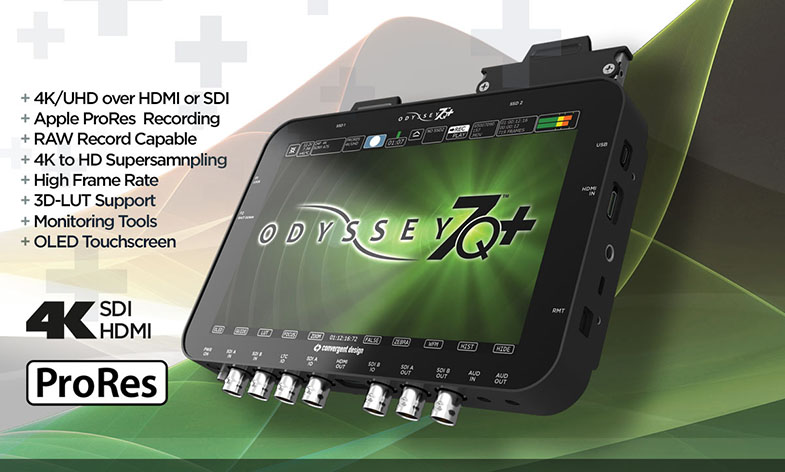
- Show all

Meike Cine lens 65mm T2.2 for MFT
Promotion: -11%Meike Cine lens 50mm T2.2 for MFT. . Compatible with Micro 4/3 MFT OLYMPUS Panasonic399.03 €449 €In stock 2 pcs

